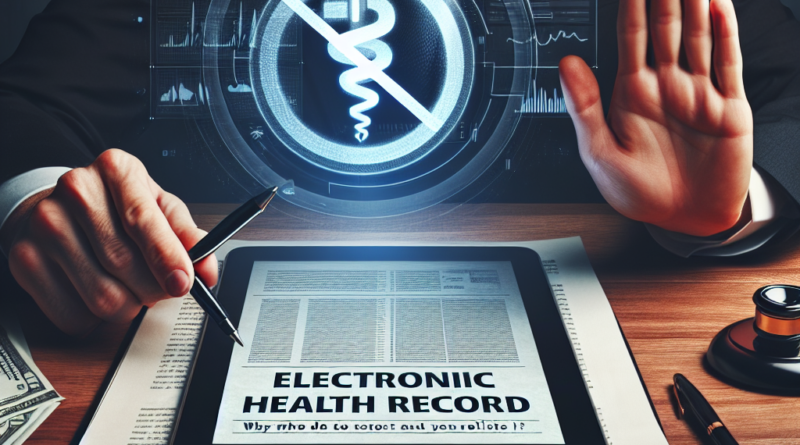How to Resist the Electronic Health Record (and Why You Should)
Understanding the Electronic Health Record (EHR)
The Electronic Health Record (EHR) is a digital collection of an individual’s health data and documents, generated from past and present clinical events.
This tool is designed to gather all relevant health information of a person, accessible to both patients and authorized healthcare professionals.
How Does the Electronic Health Record Work?
The EHR collects and organizes a person’s medical history in electronic format.
The innovation lies in the fact that it is all digital.
The National Recovery and Resilience Plan (NRRP) outlines the steps to embrace this digital innovation where, simply put, one won’t have to carry X-rays and paper reports during visits, as a smartphone or device will suffice.
Activating the EHR
The process begins with the automatic inclusion of data and documents generated when a person accesses healthcare services like medical appointments, hospitalizations, diagnostic tests, etc., with the individual’s consent.
Patients can access their EHR via an online portal using secure login credentials.
Here, they can view and download reports, discharge summaries, emergency records, prescriptions, vaccinations, and more.
Not limited to patients, healthcare professionals can access their patients’ EHR for a comprehensive and up-to-date view of their medical history, aiding in diagnosis and treatment.
Advantages and Concerns Surrounding the EHR
The EHR has garnered praise for providing constant access to medical history, reducing the need for paper documents, and minimizing information loss.
It also enables quick access to medical data for healthcare providers, streamlining emergency care and fostering information sharing among professionals.
However, concerns exist regarding data security and unauthorized access, as well as regional disparities in EHR implementation.
Regional Disparities in EHR Implementation
While the EHR rollout has begun regionally, not all areas in Italy have adopted it uniformly.
Discrepancies exist in data collection precision, user interfaces, staff training, and financial resources allocated for EHR integration.
Such variations pose challenges in ensuring equal access and usage of this tool across the country.
Next Steps in EHR Implementation
Key milestones in the EHR implementation include digitizing all healthcare documents by December, providing functionalities for payments, booking appointments, selecting primary care physicians, and consulting reports.
Citizens can choose to exclude pre-2020 health data from their EHR until June 30.
Compliance targets for healthcare professionals and the full activation of EHR across all Italian regions are set for next year and 2026, respectively.
Opting Out of the EHR
Citizens can oppose EHR activation by knowing their rights, obtaining the opposition form, correctly filling it out, submitting it to the Local Health Authority, and monitoring their status to ensure successful opposition.




